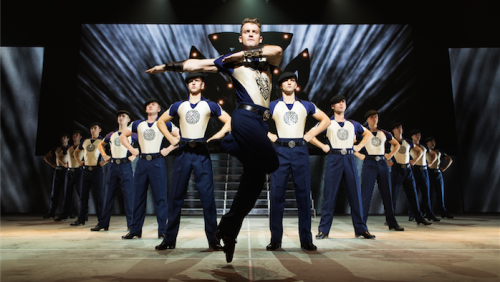
Review by John Lombard
Few dance shows open with a trailer extolling their virtue and success, but Lord of the Dance: Dangerous Games does, and that deftly sets the tone for what will follow: excellent dancing that deserves its popularity and following, but just enough egotism and bad taste to make the experience as ridiculous as it is entertaining.
Dangerous Games is about succession, with Lord of the Dance creator Michael Flatley stepping back from his prominent role as lead dancer for a comparatively less prominent role as only the show’s director, producer, and choreographer. New Lords Morgan Comer and Cathal Keaney have been sculpted into worthy successors to Flatley’s nimble athleticism. But Flately hasn’t quite hung up his tap shoes. While he was not there in person for the Canberra performance, a hologram gave us not one, not two, but three Michael Flatleys toe-tapping in unison.
The story is “good vs. evil” in the most general terms, drawing on Celtic legend and Disney movies as its primary influences. In general, the faerieland of the show is a harmonious place where young, athletic people live fairly chaste lives in balance with nature and generic Greek ruins - until, of course, a cyborg Dark Lord and his army of stormtroopers tromp in and tap-dance so frantically that the plants all catch fire. With the tacky CGI butterflies and unicorns fleeing for safety, the titular Lord of the Dance teaches his disciples to dance like a regiment - complete with fetching berets. However apparently moral alignment has no relation to dancing mojo, because even after an afternoon of fairly hectic dancing the two armies end up at stalemate. So the Dark Lord, being a resourceful type, hatches a sneaky plan to win by default: tricking the Lord of the Dance out of his magical totem, a World Wrestling Federation Belt that literally reads “Lord of the Dance”.
Early on, evil has character and identity: their dance steps are very grounded with complex footwork that suggests both marching and a sinister earthiness. The Lord on the other hand is more like a ballet hero, effortlessly hopping to the air as though he personifies lightness of heart. As the show goes on, this thematic clarity is largely abandoned: the dance battle set-pieces are largely rounds of simon says. A musical duel should involve adding something new to the routine and challenging the opponent to keep up or give up - a missed opportunity. There was also enormous thematic confusion, with dancing robots introduced in the second act but these mysteriously being a force for good, and one sequence where everyone explores their sexuality that I can only assume was meant to represent being corrupted by evil. Late in the show the good guys all don hip hop outfits, which was perhaps an American way of representing the restoration of their individuality that got a bit lost in translation.
Despite this, it works. The link between the music and the dance is very strong. It never strays into any particularly sophisticated emotional territory, preferring to paint in primary colours, but what it loses it subtlety it gains in accessibility: this is a show that anyone can appreciate. Like Disney and McDonald's, Lord of the Dance has a universality that gives it wide reach but comes at the cost of a certain plasticity. The dancers all have inviting smiles that are a little too rigid, until by the end of the show I thought the smiles looked more physically demanding than the dancing. The CGI that accompanies the show is also genuinely awful both in content and execution - bad fantasy paintings that would not be out of place as Windows 95 screensavers. But - despite its crimes against taste and sense - the dancing is genuinely great. Dangerous Games is mass-market dance with many annoyances, but enough true art to entertain even those who revolt at its excesses.